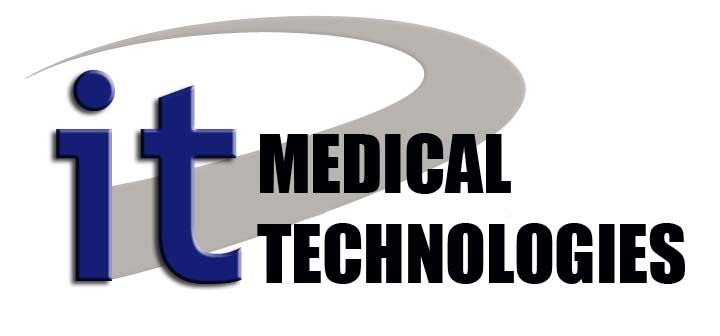Here at IT Medical Technologies, we understand that communication with your patients is the key to your success. So whether you’re first starting out or just moving to a new location, having a clear, consistent connection to your clients is more than a necessity. And now more than ever is the best time to purchase a phone system for your business. With the rapid advancement of technology, we’re seeing amazing new options and features for today’s business phone systems. IT Medical Technologies can help you decide which phone system makes the most sense for your practice.
Analog
Analog phone systems are what businesses have been using for years. This simplistic system, built on a standard copper wire, carries not only voice but data as well. That means the phone company itself provides the power; so more often than not, your phone will keep working even if there’s an electrical service outage. In short, analog phone systems are renowned for their reliability and great voice quality.
But is Analog right for you? Well, that depends on what you want to get out of your phone system. Analog systems are simple and have little room for expansion down the road. That makes them ideal for smaller businesses. They offer basic features such as: hold, mute, redial, and speed dial buttons. Beyond that, it’s essentially your average home phone features. If you don’t anticipate growth beyond those basic features, then an Analog phone system may be the right fit for you!
Digital
Want more features from your phone system? Digital may be just what you’re looking for. Digital, both wired and wireless, are a much more modern system for today’s business tycoons. This makes them a perfect option for medium to large sized businesses. Not based on a standard copper wire, Digital phone systems have the same, if not better, voice clarity than that of Analog. Featuring all the standards of the Analog system, Digital also provides additional features such as: hold music, VoIP integration (more on that later), extensions, transfers, and much more. These incredible systems can support alarm systems, voice-mail and call forwarding options. We are even just recently seeing sales software integration as well.
So the age old question, is it right for you? It really comes down to a different question all together: “hardware or software?” Digital phone systems utilize software, which is arguably superior to that of its Analog hardware competitor. Why? Simply put, because of the ability to upgrade. Instead of purchasing an entirely new system, the upgrade option will allow you to stay up to date on the most advanced features and options. So if you see the need for your business to integrate these features and continue to grow with communication, then Digital phone systems may be just what you need.
VoIP
VoIP (Voice over Internet Protocol) is a great technology that allows you to make and receive telephone calls over the Internet and has been in the mainstream now for going on 9 years. It can also be referred to as an Internet Phone. VoIP(Voice over IP) enables you to make cheap telephone calls over a broadband Internet connection, (usually a DSL, broadband cable connection, or T1), instead of using your regular telephone service. You can connect to regular telephone numbers locally or in other parts of the US or Canada, or anywhere else in the world, usually all for one low price
How does VoIP work? Voice over IP explained.
First, voice is converted by an ATA (Analog Telephone Adapter) or IP phone, from an analog signal to a digital signal. It is then sent over the Internet in data packets to a location that will be close to the destination. Then it will be converted back to an analog signal for the remaining distance over a traditional circuit switch (PSTN) (unless it is VoIP to VoIP). Your call can be received by traditional telephones worldwide, as well as other VoIP users. VoIP to VoIP calls can travel entirely over the Internet. Since your voice is changed to digital (so that it can travel over the Internet), other great features such as voice messages to email, call forwarding, logs of incoming and outgoing calls, caller ID, etc., can be included in your basic calling plan all for one low price. Many of these special features are great for the small business person who relies on their phone service to be more a information center rather than just a telephone.
VoIP PBX
A PBX stands for “Private Branch Exchange.” A private branch exchange is the internal network of phones, which connect as a group, not individually, to telephone trunks. Many businesses are making the switch to fully hosted PBX solutions, but there is also a way to combine your existing PBX infrastructure with cloud functionality. This is called a “Hybrid PBX,” or a “Hybrid-Hosted PBX.” A hybrid PBX can provide the best of both worlds.
A hybrid PBX combines existing legacy PBX equipment with VoIP. A PBX connects internal users to the outside world with a PRI or BRI, which has 24 channels. There are often many PRIs to connect hundreds of phones. In a hybrid PBX, these PRIs connect to a device—this is the Hybrid PBX itself—and the two devices connect to the outside world via both PSTN trunks and SIP credentials. The hybrid PBX also has many IP extensions to connect directly to IP phones in the office. On one side of the device, there are number of Ethernet and telephone jacks; on the other, there is usually a WAN (to the internet), a LAN (to the internal network), a console port, and LED lights to indicate which lines are active. Asterisk, and its many derivatives, is the most popular method of deploying hybrid PBX.
A hybrid PBX has many of the same great features you can expect from VoIP services, including call rules, auto-attendant, and hold queues. The hybrid PBX also has the capacity for virtual conference rooms, fax over IP, and video conferences. The hybrid PBX also can do SIP trunking. The most important feature of the hybrid PBX is that if either the legacy PBX or the VoIP server isn’t working, it automatically switches over to the other network.

